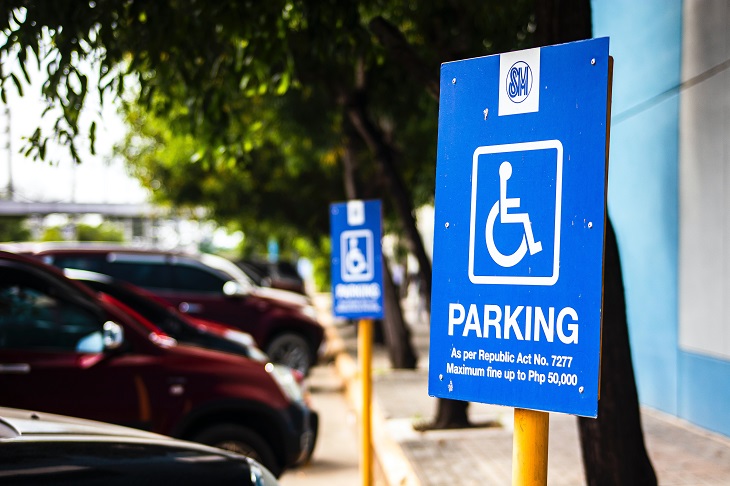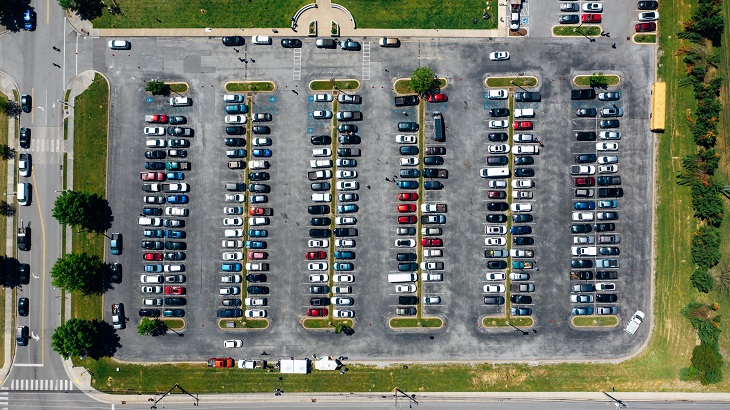Parking spaces designated for individuals with disabilities are crucial for fostering inclusivity and accessibility in our communities. Unfortunately, the existing handicap parking infrastructure often falls short, creating challenges for people with mobility issues. So how can we help by advocating for improved handicap parking? Let’s take a look at some potential community initiatives aimed at improving handicap parking spaces, advocating for accessibility, and fostering collaborations between local businesses and government bodies.
Why Handicap Parking is a Vital Part of Inclusive Communities
Let’s start off by talking about why inclusivity is so important in our communities, and how disabled parking contributes to this.
Inclusive communities are built on the principles of accessibility, understanding, and equal opportunity for all residents. Handicap parking, as a visible and tangible element, plays a crucial role in creating an environment that values and accommodates individuals with disabilities. In this article, we delve into why handicap parking is an essential element of inclusive communities.
Accessibility and Mobility
Handicap parking spaces are designed to provide individuals with disabilities the proximity they need to public facilities and services. These spaces are strategically located to reduce travel distance and facilitate easier access, ensuring that individuals with mobility challenges can participate fully in community life. The provision of accessible parking removes physical barriers, allowing everyone to navigate public spaces with dignity and independence.
Equal Participation in Community Life
Inclusive communities thrive on the active participation of all members. Handicap parking is a key component in ensuring that individuals with disabilities can engage in community events, attend local businesses, and participate in public activities. By providing accessible parking, communities send a powerful message of inclusivity, acknowledging the importance of every resident’s contribution to the social fabric.
Independence and Autonomy
Access to handicap parking spaces empowers individuals with disabilities to maintain a level of independence and autonomy in their daily lives. Whether running errands, attending community gatherings, or accessing essential services, having convenient and accessible parking options allows people with disabilities to navigate their surroundings without relying on constant assistance. This independence is foundational to fostering a sense of belonging within the community.
Breaking Down Stigmas and Stereotypes
Visible and well-maintained handicap parking spaces contribute to breaking down societal stigmas and stereotypes associated with disabilities. By integrating accessible parking into the community landscape, it becomes a visible reminder that diversity and inclusion are celebrated values. This, in turn, helps challenge preconceived notions about disabilities and promotes a more empathetic and understanding community ethos.
Legal Compliance and Social Responsibility
Ensuring the availability of handicap parking spaces is not just a matter of legal compliance; it is a demonstration of social responsibility. Communities that prioritize accessible parking demonstrate a commitment to upholding the rights of individuals with disabilities and complying with regulations that mandate equal access. By doing so, these communities set an example for other municipalities and contribute to a broader culture of inclusivity.
Economic and Business Considerations
Businesses within a community also benefit from providing ample handicap parking. Accessible parking spaces increase the customer base by catering to individuals with disabilities who may otherwise be deterred from patronizing establishments. This inclusivity not only fosters economic growth within the community but also promotes a sense of community pride in supporting businesses that prioritize accessibility.
Future-Proofing for Aging Populations
As populations age, the need for accessible facilities, including parking spaces, becomes even more critical. By investing in and prioritizing handicap parking now, communities are future-proofing their infrastructure to meet the evolving needs of an aging population. This proactive approach ensures that the community remains accessible and welcoming for all, regardless of age or ability.
Community Initiatives for Handicap Parking Improvements
Creating positive change begins at the grassroots level. Community initiatives play a pivotal role in raising awareness and implementing tangible improvements to handicap parking spaces. Establishing local advocacy groups or partnering with existing organizations can be a powerful first step.
These initiatives may involve conducting surveys to identify areas with inadequate accessibility, organizing awareness campaigns, and collaborating with local authorities to address specific concerns. By mobilizing community members, these initiatives can generate a collective voice that demands improvements in handicap parking facilities.
Advocating for Accessible Parking Spaces in Neighborhoods
The foundation of accessible parking improvement lies in active advocacy within neighborhoods. Residents can initiate conversations with homeowners’ associations, local government representatives, and fellow community members to address the need for accessible parking spaces.
Advocacy efforts can include presenting data on the current state of handicap parking, sharing personal stories of individuals facing difficulties, and proposing concrete solutions. By building a strong case for change, communities can inspire local leaders to prioritize the enhancement of accessible parking options in residential areas.
Improving Handicap Parking Infrastructure at Local Businesses
Local businesses play a crucial role in fostering accessibility within communities. Enhancing handicap parking infrastructure at businesses requires a collaborative effort between owners, customers, and local authorities. Advocacy groups can engage with businesses by offering educational resources, sharing best practices, and proposing feasible improvements.
Encouraging businesses to conduct accessibility audits and implement necessary changes not only benefits people with disabilities but also contributes to a more inclusive and welcoming community. By working together, local businesses and advocacy groups can create an environment that prioritizes the needs of all patrons.

Accessible Parking Advocacy for People with Disabilities
People with disabilities are at the forefront of the movement for accessible parking. Empowering individuals to advocate for their rights is crucial for effecting change. This advocacy involves educating the public about the challenges faced by people with disabilities, promoting awareness of existing laws and regulations, and encouraging self-advocacy.
Community organizations can facilitate workshops and events that empower individuals with disabilities to become advocates for accessible parking. By amplifying their voices, the community can challenge stereotypes, break down barriers, and contribute to a more inclusive society.
How to Promote Better Handicap Parking in Your Community
Promoting better handicap parking involves a multifaceted approach that engages various stakeholders. Communities can take several practical steps to foster positive change:
- Education and Awareness Campaigns: Develop and implement educational campaigns to raise awareness about the importance of accessible parking and the challenges faced by individuals with disabilities.
- Collaboration with Local Media: Engage with local media outlets to share stories, highlight successes, and raise awareness about the need for improved handicap parking facilities.
- Community Workshops and Seminars: Organize workshops and seminars to educate community members, business owners, and government officials about the benefits of accessible parking and the steps needed to enhance infrastructure.
Engaging with Local Government for Accessible Parking Changes
Government support is crucial for implementing long-lasting changes in handicap parking infrastructure. Engaging with local government officials involves building relationships, presenting compelling cases for improvement, and actively participating in public forums.
Advocacy groups can work with local representatives to propose policy changes, advocate for stricter enforcement of existing regulations, and collaborate on infrastructure upgrades. By actively participating in the democratic process, communities can ensure that accessible parking remains a priority on the local government’s agenda.
Raising Awareness for Improved Handicap Parking Facilities
Raising awareness is a continuous effort that involves the entire community. Public awareness campaigns can utilize various channels, including social media, community events, and partnerships with local organizations.
Sharing success stories, testimonials, and educational content can contribute to changing public perception and fostering empathy. By making accessibility a community-wide priority, the movement for improved handicap parking facilities gains momentum.
Community Projects for Enhancing Accessible Parking Options
Implementing tangible projects within the community is a key aspect of improving accessible parking options. These projects may include:
- Parking Lot Redesign: Collaborate with local businesses and government bodies to redesign parking lots, ensuring adequate space and convenient locations for accessible parking.
- Installation of Signage: Work with local authorities to install clear and visible signage for handicap parking spaces, including information about fines for misuse.
- Maintenance and Upkeep: Organize community-led initiatives to ensure that accessible parking spaces are well-maintained and free from obstructions.
Collaborating with Businesses on Handicap Parking Upgrades
Businesses can be powerful allies in the quest for improved handicap parking. Advocacy groups can collaborate with local businesses by:
- Providing Resources: Share resources, guidelines, and best practices for creating accessible parking spaces.
- Offering Incentives: Explore incentive programs to encourage businesses to invest in accessible infrastructure.
- Celebrating Successes: Acknowledge and celebrate businesses that go above and beyond in enhancing accessible parking options, fostering a sense of community pride.
Initiatives for Inclusive and Accessible Parking in Neighborhoods
Inclusivity should be at the forefront of all community initiatives. To create truly accessible neighborhoods, consider:
- Universal Design Principles: Encourage the adoption of universal design principles in public spaces, ensuring that they are accessible to everyone, regardless of ability.
- Community Collaboration: Foster collaboration between different community groups to address the unique needs of various populations, ensuring that no one is left behind.
- Policy Advocacy: Advocate for the adoption and enforcement of policies that prioritize accessibility in urban planning and development.
***
Improving handicap parking facilities requires a concerted effort from individuals, communities, businesses, and government bodies. By embracing a holistic approach that combines advocacy, education, collaboration, and tangible projects, communities can drive positive change and create a more inclusive environment for everyone. The journey towards accessible parking is a collective responsibility that, when undertaken with passion and commitment, can transform communities and enhance the quality of life for individuals with disabilities.
Featured image by Ibrahim Boran on Pexels




